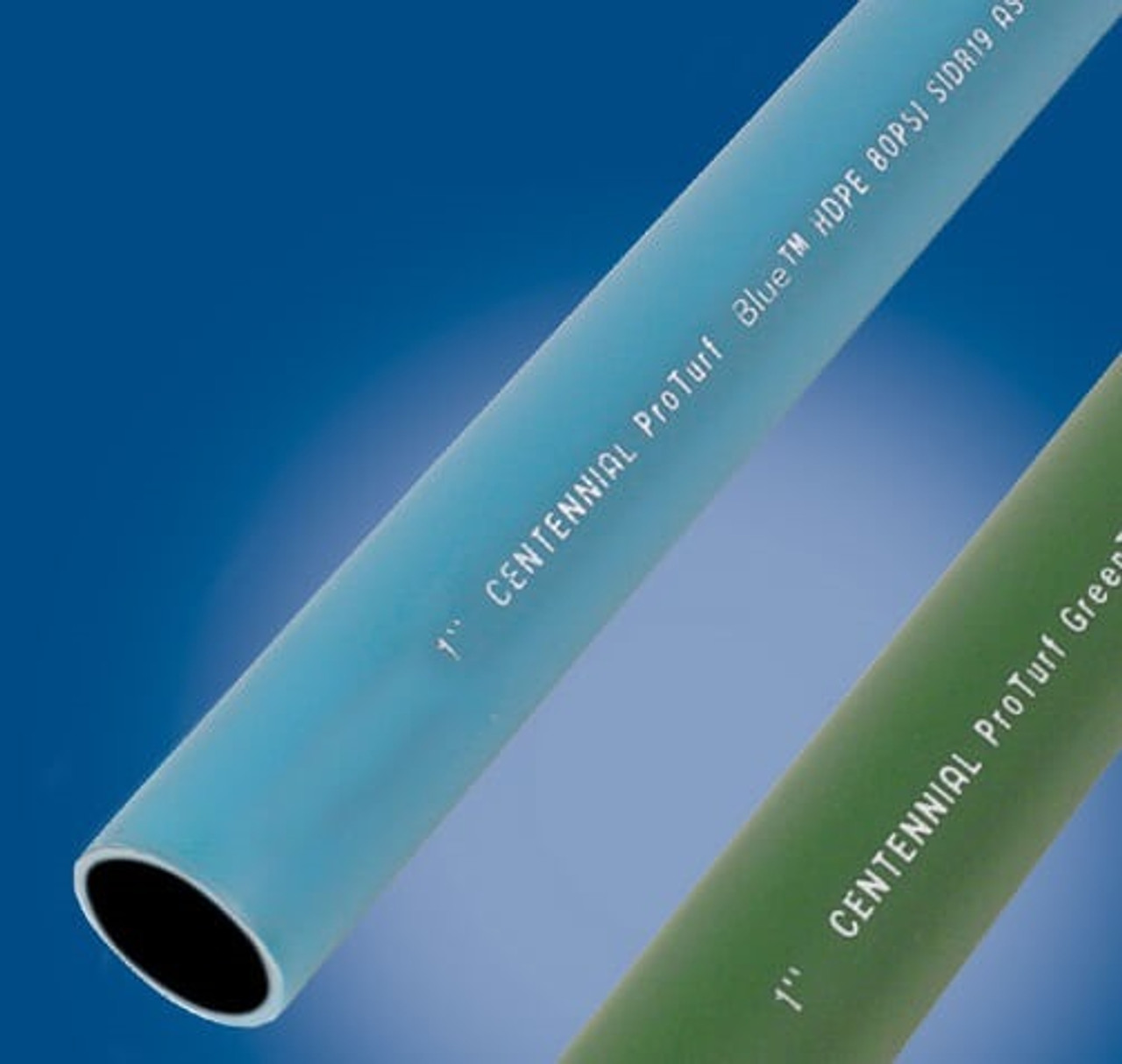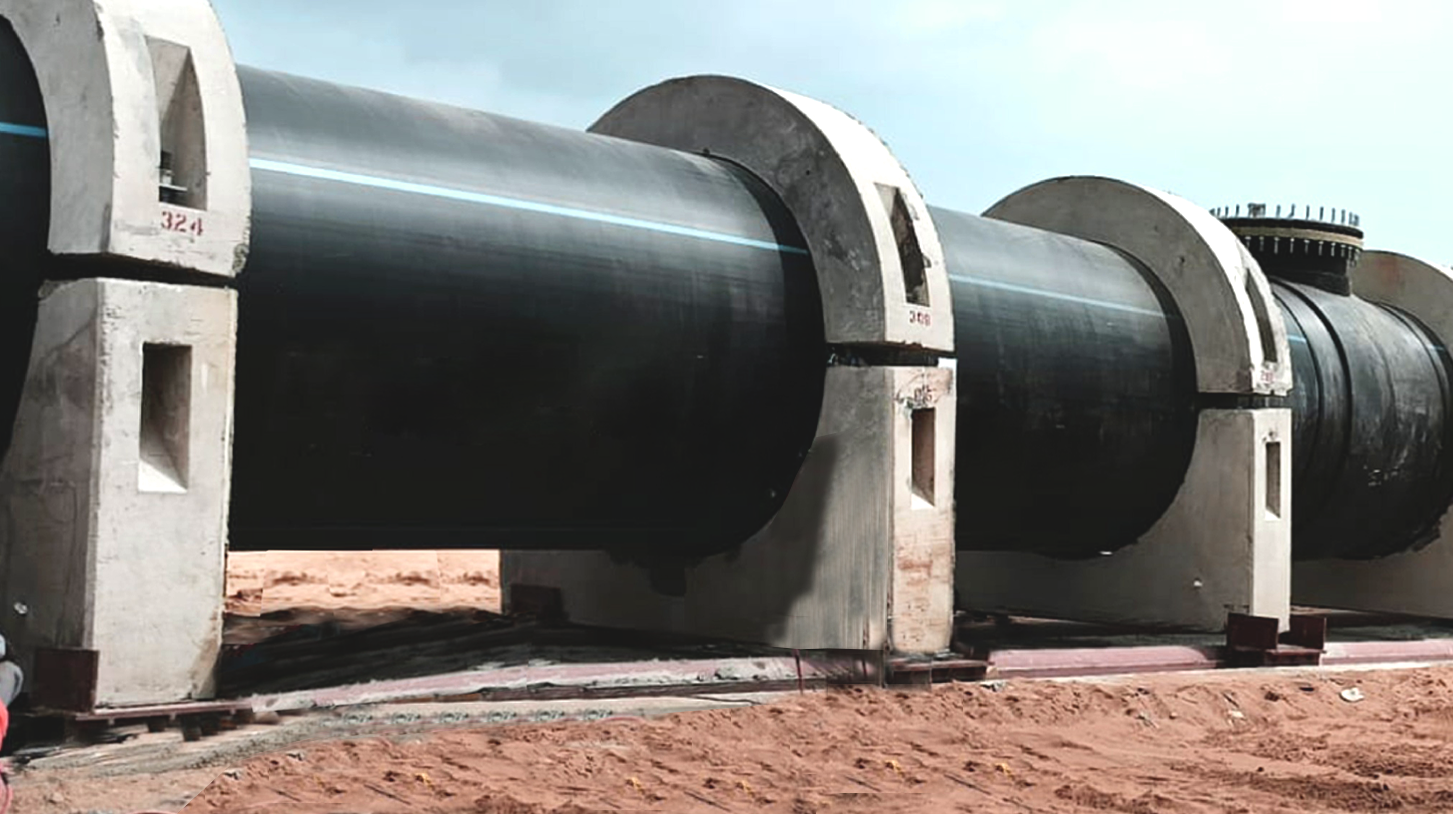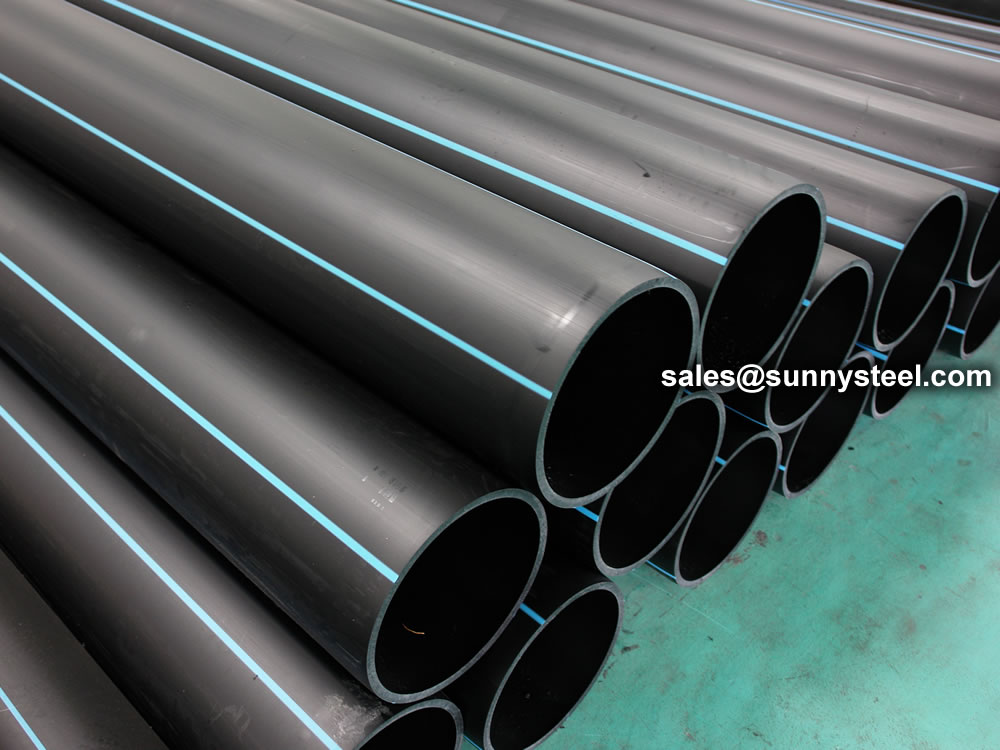How to Install hdpe pipe fittings Midland TX for Reduced Maintenance
Wiki Article
Check Out the Production Refine Behind High-Quality HDPE Pipe and Its Applications
The manufacturing process of top notch HDPE pipelines is complex and systematic. It begins with the option of basic materials that boost performance. Following this, ethylene goes through polymerization to develop resin, which is then formed with extrusion. Quality assurance is extremely important, making certain that the last product satisfies stringent requirements. However, the trip of HDPE pipes does not end with manufacturing. Their applications across numerous industries disclose a wider importance worth taking a look at.Comprehending HDPE: Characteristics and Advantages

High-density polyethylene (HDPE) is a flexible polycarbonate understood for its toughness and resistance to various ecological factors. This product displays outstanding tensile toughness, making it ideal for demanding applications. Its low-density structure adds to a light-weight item, assisting in simplicity of handling and setup. HDPE additionally showcases impressive resistance to chemicals, which lessens deterioration when exposed to rough substances.
The material's low moisture absorption further enhances its long life, making it optimal for use in pipes and tank. Furthermore, HDPE is immune to ultraviolet (UV) radiation, ensuring that items preserve their honesty also when exposed to sunlight. Its adaptability allows for the creation of elaborate forms without compromising strength. The environment-friendly nature of HDPE, often acquired from recycled products, contributes to its appeal, advertising sustainable practices in manufacturing. Generally, these residential or commercial properties and benefits make HDPE a favored selection for numerous industrial and customer applications.
Resources Choice for HDPE Production
The selection of resources for HDPE production is vital to validate the end product fulfills the preferred specifications and high quality criteria. High-density polyethylene (HDPE) is mainly produced from polymerized ethylene, obtained from fossil fuels such as all-natural gas or petroleum. The top quality of these feedstocks greatly affects the mechanical and thermal residential properties of the final HDPE.Ingredients also play a significant duty in improving HDPE's performance, consisting of anti-oxidants, UV stabilizers, and colorants, which boost longevity and resistance to ecological elements. The option procedure should take into consideration not only the chemical structure of the raw products however also their processing characteristics to guarantee reliable manufacturing.
Furthermore, the sourcing of basic materials need to focus on sustainability and conformity with ecological laws, as liable methods are crucial in today's market. Inevitably, mindful basic material selection lays the structure for creating high-quality HDPE pipes suitable for diverse applications.
The Extrusion Refine: Forming HDPE Pipeline
The extrusion process plays a crucial duty in forming HDPE pipelines, starting with precise product preparation methods that assure optimal flow and uniformity. Just as important is the design of the die, which directly affects the last dimensions and surface area quality of the pipeline. Together, these aspects add greatly to the performance and top quality of HDPE pipe production.Product Prep Work Methods
Effective manufacturing of HDPE pipelines starts with thorough material prep work techniques, especially the extrusion process. Throughout this phase, high-density polyethylene resin is very first dried to get rid of dampness, making certain perfect flow attributes. The resin is after that fed right into the extruder, where it goes through home heating and melting, transforming right into a thick state. This home heating process is meticulously regulated to maintain the product's stability and efficiency. The molten HDPE is compelled via a die, shaping it right into a continual pipe type. Appropriate temperature level monitoring during extrusion is crucial, as it directly affects the material's residential or commercial properties and the end product top quality. Once formed, the HDPE pipe is cooled down and cut to specified sizes, all set for succeeding processing and applications.Die Design Importance
Accuracy in die layout plays a necessary function in the extrusion process of HDPE pipelines. The die works as the final shaping device, directly influencing the pipeline's measurements, wall surface thickness, and surface coating. A well-designed die assurances uniform material flow, reducing defects such as irregularities and weak spots. The geometry of the die have to be optimized to accommodate the specific residential properties of HDPE, including its thickness and thermal behavior throughout extrusion. Additionally, the cooling price of the product as it goes through the die can markedly affect the pipeline's structural honesty. Investing in sophisticated die modern technology is vital for manufacturers intending to produce high-grade HDPE pipelines that fulfill sector standards and consumer assumptions.Quality Control Steps in HDPE Manufacturing
Different aspects affect the quality of HDPE pipe production, reliable high quality control measures are critical to ensure consistency and reliability in the last item (Texas hdpe pipe manufacturer). Secret quality assurance methods consist of extensive material examination, verifying that underground water leak detection company the raw polyethylene satisfies well-known requirements for pureness and density. During the extrusion procedure, criteria such as temperature, pressure, and cooling time are closely monitored to maintain dimensional precision and structural stabilityIn addition, post-production screening is vital; producers commonly perform hydrostatic examinations to assess the pipe's stamina and resistance to stress. Aesthetic inspections for surface area problems even more boost quality control. Qualification from appropriate criteria organizations, like ASTM or ISO, supplies an additional layer of integrity. By carrying out these extensive quality assurance procedures, makers can decrease issues, enhance performance, and make certain that the HDPE pipes fulfill the particular demands of various applications, eventually leading to consumer complete satisfaction and depend on in the item.
Applications of HDPE Pipeline Across Industries
HDPE pipes are made use of throughout different industries due to their resilience and flexibility. In water distribution systems, they assure reliable shipment, while in wastewater management, they give reputable services for waste transport. Furthermore, farming irrigation networks profit from HDPE's resistance to rust and adaptability, making it a suitable selection for modern-day farming techniques.
Water Circulation Equipments
A considerable variety of sectors count on high-density polyethylene (HDPE) pipelines for effective water distribution systems. Recognized for their toughness and resistance to deterioration, HDPE pipelines are extensively used in municipal water system networks, farming irrigation, and industrial applications. Their light-weight nature promotes easy handling and setup, minimizing labor prices and time. Furthermore, HDPE pipes can accommodate different pressure levels, making them suitable for both low and high-pressure systems. Pipe Supplier American Plastics Midland. The versatility of the material enables smooth integration right into existing facilities, decreasing the need for comprehensive excavation. HDPE's resistance to chemical seeping assurances that the water delivered continues to be risk-free and tidy, making it a perfect selection for keeping the top quality of safe and clean water across numerous fields.Wastewater Administration Solutions
Efficient water circulation systems likewise lead the way for ingenious wastewater management remedies, where high-density polyethylene (HDPE) pipes play a considerable duty. Prominent for their durability and resistance to deterioration, HDPE pipelines are perfect for carrying wastewater in various setups. Their flexibility enables easy installation in complicated settings, lessening the need for comprehensive excavation. Additionally, HDPE's smooth indoor surface minimizes rubbing, enhancing flow prices and efficiency. These pipelines are likewise immune to chemical leaching, making certain that contaminants do not jeopardize the surrounding setting. Industries, communities, and treatment centers progressively depend on HDPE pipes for their dependability and long life, making them a recommended option for contemporary wastewater monitoring systems. This versatility underscores the crucial importance of HDPE pipes across various applications.Agricultural Watering Networks
Agricultural irrigation networks profit significantly from making use of high-density polyethylene (HDPE) pipes, which offer reliable and reputable water shipment to plants. HDPE pipelines are lightweight, making them very easy to transport and mount, while their adaptability permits numerous configurations in varied terrains. These pipelines demonstrate exceptional resistance to rust, chemicals, and UV radiation, ensuring longevity in extreme farming environments. Additionally, their smooth interior surface minimizes rubbing loss, optimizing water flow and reducing energy costs associated with pumping. The longevity of HDPE pipes, frequently exceeding 50 years, adds to reduce upkeep and replacement expenses. Farmers progressively count on HDPE pipes to enhance watering efficiency and advertise lasting farming practices, ultimately leading to improved crop returns and resource conservation.
Future Patterns in HDPE Pipeline Technology
As the need for sustainable and reliable infrastructure grows, advancements in HDPE pipeline technology are poised to transform different markets. Arising fads consist of the assimilation of smart modern technologies, such as sensing units and IoT abilities, which promote real-time surveillance of pipe problems, reducing upkeep costs and avoiding clogged drain line leakages. In addition, the development of advanced manufacturing techniques, such as 3D printing, is making it possible for the production of complex, tailored pipe layouts that accommodate details project requirements.In addition, the concentrate on recycling and round economic situation techniques is driving the technology of HDPE pipes made from recycled materials, improving sustainability. Enhanced jointing techniques, such as electro-fusion and mechanical installations, are also boosting setup performance and reliability. Lastly, the expanding emphasis on environmental guidelines is pushing suppliers to embrace greener production procedures, ensuring that HDPE pipelines not only meet market requirements yet likewise promote a more lasting future for framework advancement.
Regularly Asked Concerns
Exactly How Does HDPE Compare to Other Plastic Products?
HDPE outshines several various other plastic materials concerning durability, chemical resistance, and adaptability. Its low thickness and high tensile stamina make it optimal for various applications, often surpassing options in both efficiency and durability.What Are the Ecological Influences of HDPE Production?
The ecological impacts of HDPE production include greenhouse gas discharges, energy usage, and possible contamination from making procedures. In addition, incorrect disposal can lead to dirt and water contamination, raising issues about long-term environmental results.Can HDPE Pipes Be Reused?
Yes, HDPE pipes can be reused. Several facilities accept used HDPE for processing, transforming it into new products. This reusing adds to sustainability efforts, reducing plastic waste while saving sources and power in the manufacturing cycle.What Is the Life Expectancy of HDPE Water Lines?

Exactly How Do Temperature Level Variants Affect HDPE Pipeline Efficiency?
Temperature level variants greatly affect HDPE pipe efficiency, influencing adaptability and strength. High temperature levels can result in softening, while reduced temperatures might cause brittleness, eventually affecting the pipeline's sturdiness and viability for various applications in varied settings.Report this wiki page